Hydromet Facilities
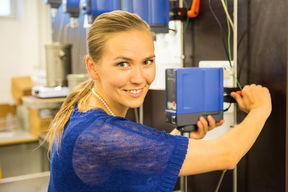
Our laboratory is well-equipped having leaching reactors and continuous leaching station (OKTOP® reactors), autoclave (Büchi ecoclave 075), electrochemical equipment (several potentiostats, power supplies, reactors, cells, a wide variety of electrodes), three quartz crystal microbalances (QCM 200 Standford Research Systems), moisture analyzer, sample preparation station and AAS (iCE 3500 AA Spectrometer) for solution analysis. In addition the School of Chemistry has wide variety of infrastructure supporting hydrometallurgical research (e.g. particle size analyzer, SEM-EDS, XRD and ICP-OES) with support from Nanotalo and Micronova research centres. The laboratory is also a part of Academy of Finland RawMatTERS Finland Infrastructure having the Particle Characterisation Unit (RAMI).
Equipment
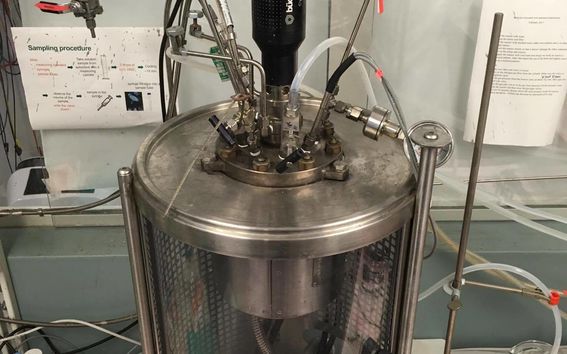
Buchi Ecoclave 075
The autoclave is equipped with titanium (grade 2) reactor with a volume of 1.1 L, max pressure of 60 bars and temperature up to 250 °C. Autoclave equipped with nitrogen and oxygen inlet as well as a sampling system. The autoclave process is monitored and controlled by using BLS 2 software.

Continuous leaching station
Constructed of 5 titanium reactors each with volume of 5 L. Each reactor is also equipped with a stirring unit and temperature regulator which makes batch and continuous leaching possible. Counter current leaching tests can also be performed at the station.

Thermo Scientific ICE 3000
The use of Atomic Absorption Spectrometer (AAS) in analyzing solution composition provides essential support to the research activities. The AAS instrument is equipped with flame compartment tray and quick fit lamps which simplify the use of the instrument. Flame safety is enhanced with a fully automatic gas control system.

BELSORP-Mini II
• Allows pore size and surface area of dry materials/powders to be determined
• 3 independent sample ports that can be measured concurrently
• Samples can be prepared in-situ with built-in heater (50 to 400 °C)
• Adsorption gases available: N2 and He (others possible on request)
• Cooling via liquid N2 Dewar (up to 30 hours measurement duration)
• Analyses methods include:
- Adsorption/desorption isotherms
- BET, Langmuir, BJH/CI/DH
• Resolution = 0.01m2/g
• Pore size = 0.07 to 400nm
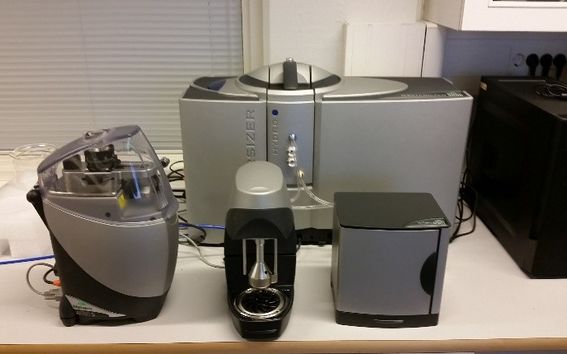
Malvern Mastersizer (Particle Sizer)
• Particle size range from 10nm to 3500μm
• Auto dry powder dispersion units
- Aero S (up to 3500μm)
• Manual wet dispersion units
- Hydro EV (up to 1000 ml)
- Hydro SV (5.6mL - 7mL)
• Dynamic image analysis
- Hydro Sight (9 to 1000 μm; 3.75 fps)

Quantachrome Ultrapyc 1200e (Pycnometer)
• Allows accurate determination of density and volume of powders/porous materials
• Sample Volumes =
- Large, 135 cm3
- Medium, 50 cm3
- Small, 10 cm3
• Resolution = 0.0001 g/cm
• Pressure range = 0.07 to ~1.4 bar
• Uses He gas
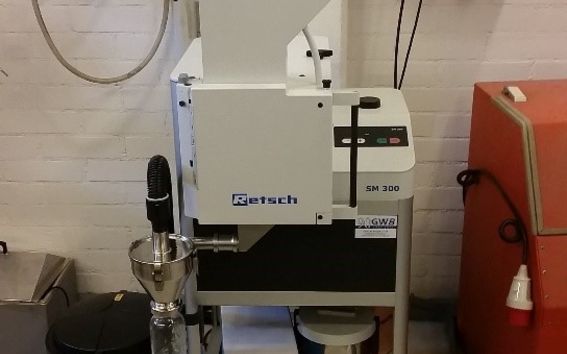
Retsch SM 300 (Cutting Mill)
• Suitable for the grinding of soft, medium-hard, tough, elastic, fibrous and heterogeneous mixes of products
• Material feed size < 60 x 80 mm
• Final fineness = 0.25 - 20 mm
• Speed range from 700 to 3000 RPM
• Cyclone-suction-combination for light or small samples
• Capacity = 0.25 to 5 l
• Grinding tools = Heavy-metal free steel
• Example materials: aluminium slag, WEEE, non-ferrous metals, plastics, polymers, textiles, waste and wood

Motic BA310 MET-T (Light Microscope)
• Objective lenses:
- 5x (n.a. = 0.13; W.D. 20.3 mm)
- 10x (n.a. = 0.25; W.D. 17.5 mm)
- 20x (n.a. = 0.40; W.D. 8.1 mm)
- 50x (n.a. = 0.55; W.D. 8.4 mm)
• Z-Axis movement 30 mm
• Large sample stage (240 x 140 mm) with glass base for transmission analysis
• Z-Axis movement 30 mm
• Fine focus = 2 μm minimum increment
• Halogen illumination
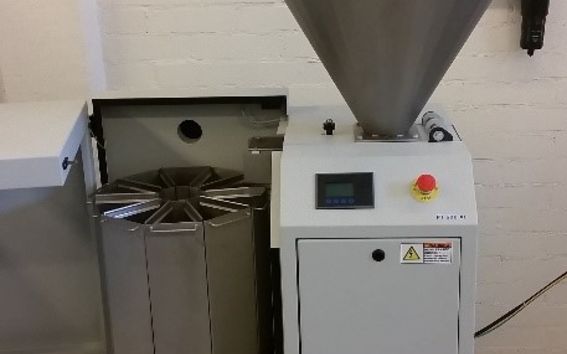
Retsch PT 600 XL (Sample Divider)
• Suitable for soft, medium-hard, tough, elastic, fibrous and heterogeneous mixes of powdery products






